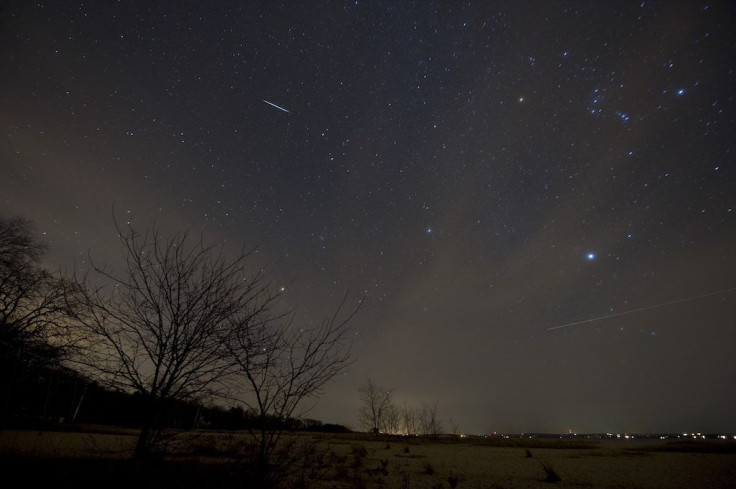Geminid Meteor Shower 2018: When's The Best Time To Watch?

The Geminid meteor shower is expected to peak on Thursday and Friday nights. People will be able to witness chunks of an asteroid fly through the sky as green fireballs.
The Geminid meteor shower was first recorded in 1862 and has consistently been happening every year in the month of December. People who want to witness the phenomenon for themselves should hope for clear skies and keep some notes on when is the best time to view the metero shower.
For those who want to see a first glimpse of the meteor shower, they should have their eyes glued the sky a few hours after sunset on Thursday and Friday. A helpful reminder is to look in the opposite direction of the moon. NASA said that people will most likely see a lot of meteors around 2 a.m. in the morning, with a maximum of 100 per hour, as per CNN.
It’s also predicted that the meteors will be most visible in the United States before sunrise on Friday, with the peak of the meteor shower happening at around 7:30 a.m. AccuWeather also said in a report that the best viewing weather, when the skies are most clear, will be on Thursday night in the central and western U.S.
“While the peak is expected early Friday morning the 14th, don't let that stop you from starting to look for Geminids anytime this week. If you run into clouds Thursday, the shower will still be active Friday evening, though with reduced numbers,” Sky and Telescope magazine’s Bob King said.
The number of meteors that will be visible will depend on the time and how dark it is, however. For those in the suburbs, they will be seeing around 30 to 40 meteors per hour. For those living in big cities where light pollution is simply unavoidable, it’s unlikely for them to see anything.
The Geminid shower always happens in mid-December when the Earth passes through the trail of a comet. What people will be seeing in the skies are the burning debris from an asteroid called 3200 Phaethon. As reported by Vox, the asteroid is just 3 miles wide and behaves more like a comet than an actual asteroid since it forms a tail. This is also why the asteroid is sometimes referred to as a “rocket comet.”
© Copyright IBTimes 2025. All rights reserved.



















